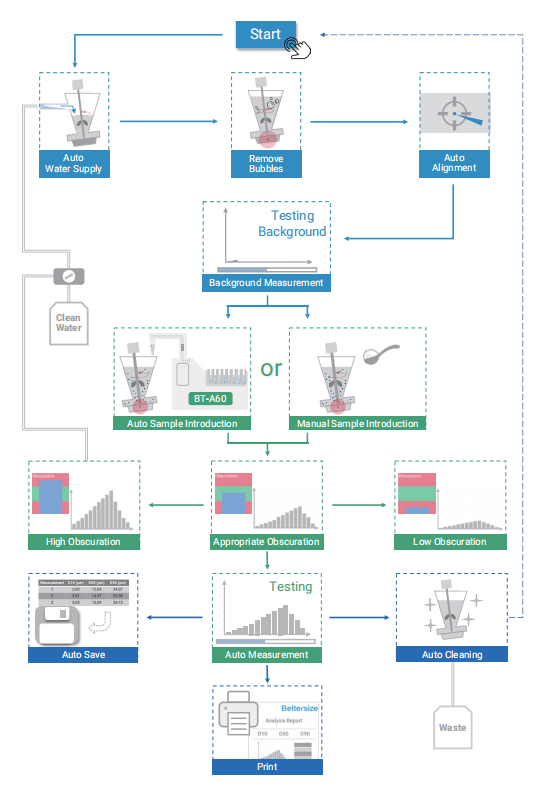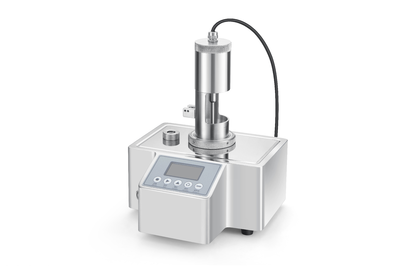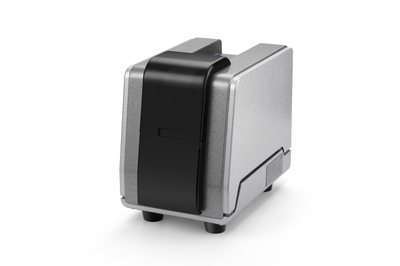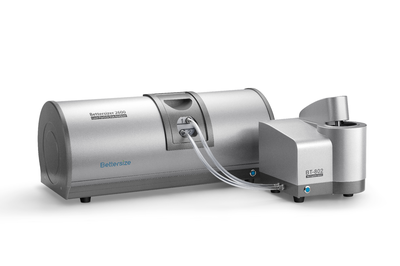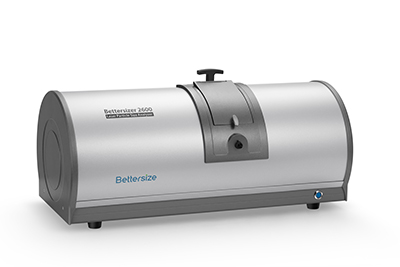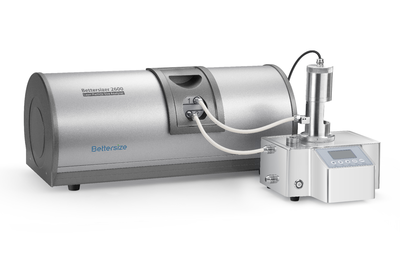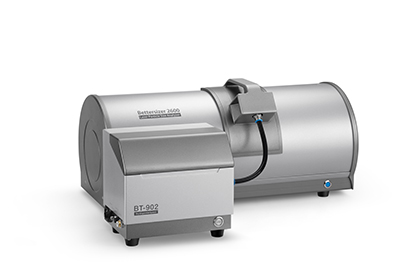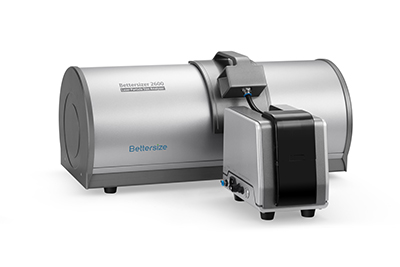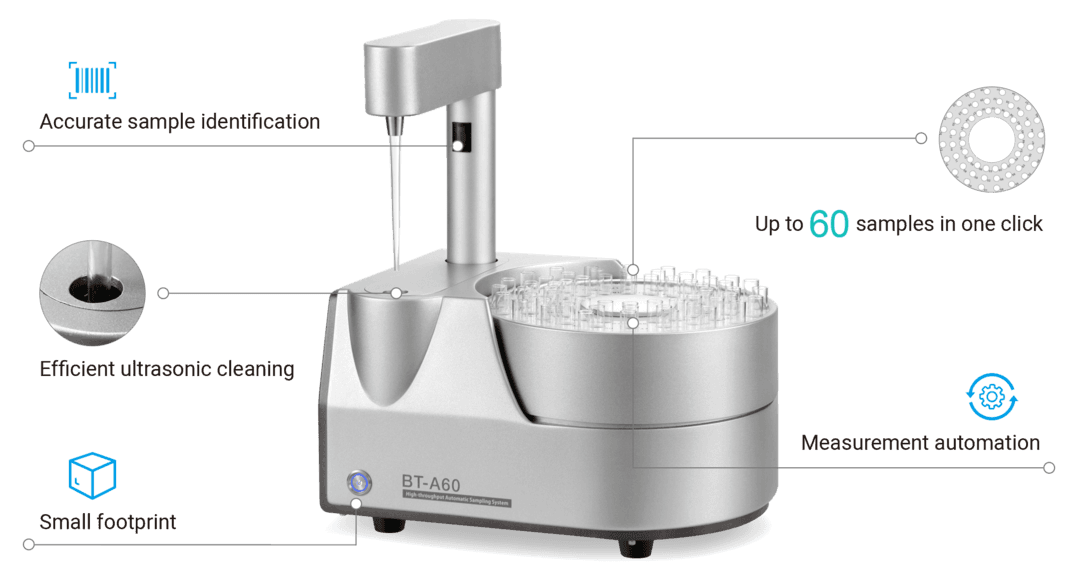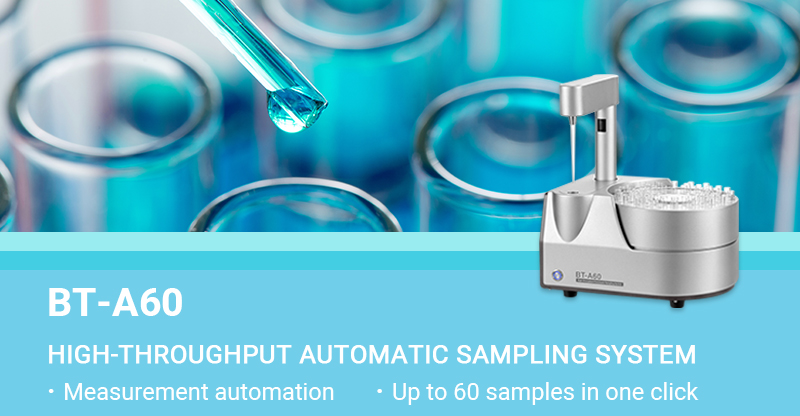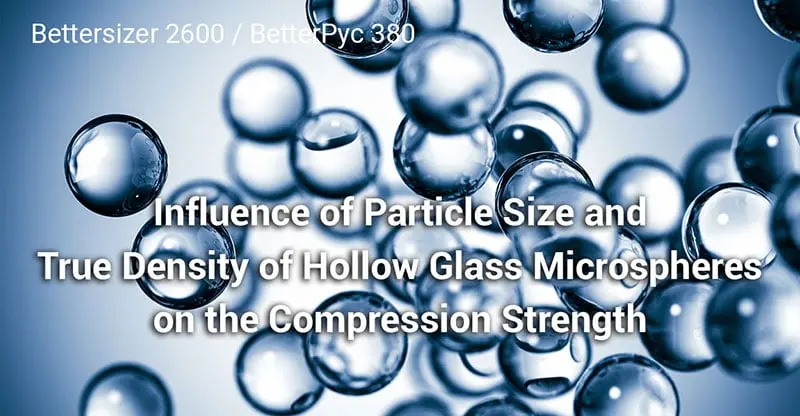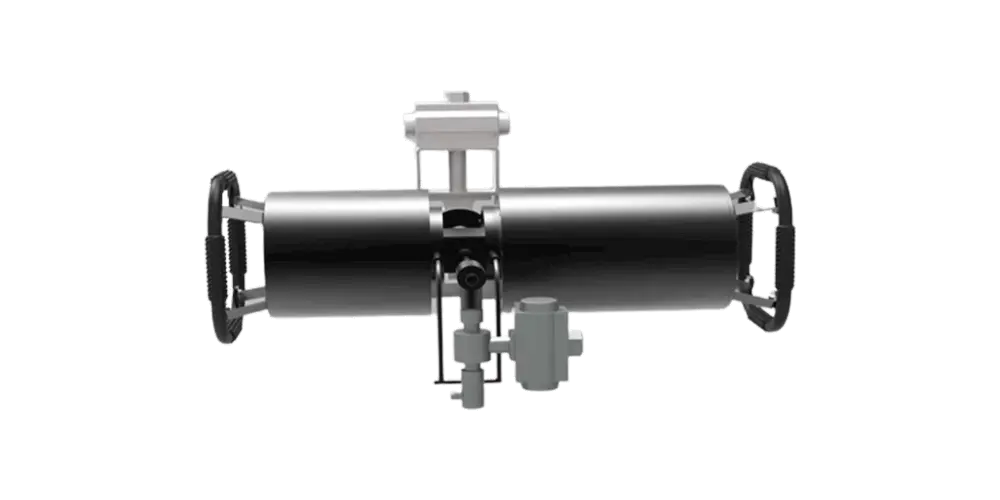Bettersizer 2600
El tamaño de las partículas puede medirse por vía húmeda o seca, utilizando el Bettersizer 2600. Una gran variedad de aplicaciones han sido cubiertas por este versátil y potente analizador con su diseño modular y tecnologías patentadas. Los usuarios pueden caracterizar materiales desde 0,02 μm hasta 2600 μm, con facilidad y precisión.
Características y ventajas
- ● Tecnología: Difracción láser
- ● Gama de tamaños de partículas: Dispersión húmeda: 0,02 a 2.600μm Dispersión seca: 0,1 a 2.600μm
- ● El método húmedo y seco de granulometría es adecuado para una amplia variedad de sistemas de partículas dispersantes
- ● Medición precisa de partículas grandes y pequeñas que cubren la gama más amplia mediante una nueva tecnología patentada que utiliza sistemas ópticos de Fourier y de Fourier invertido.
- ● Banco óptico con 92 detectores que cubren una gama angular de 0,016° - 165° Dispersión húmeda y/o seca opcional
- ● Módulo de dispersión en seco de pequeño volumen para pequeñas cantidades de muestra, especialmente para muestras farmacéuticas o valiosas de escaso suministro
- ● Cambio fácil y rápido entre módulos de dispersión
- ● Procedimientos normalizados de trabajo fáciles de aplicar, crear y utilizar para nuevos materiales
- ● Medición del índice de refracción para proporcionar un parámetro más preciso para calcular los resultados.
- ● Software de fácil manejo y aprendizaje
Vídeo
How to Install and Operate Bettersizer 2600 
Bettersizer 2600 | Laser Diffraction Particle Size Analyzer (Wet & Dry) 
Snippet - How to Measure Particle Size of Coffee Powder 
Ask an Expert! Introducing Bettersizer 2600 
A Brief Introduction to Laser Diffraction | Fundamentals of Bettersizer 2600 
Bettersizer 2600 Demonstration with Corundum (Al2O3) sample 
How to Measure Particle Size of Cosmetics 
How to Measure Particle Size of Coffee Powder 
Bettersizer 2600 Overview | Laser Diffraction Particle Size Analyzer (Dry & Wet Dispersions) 
Visión general
Características
PNT
Rendimiento
Tecnología
Especificación
Accesorios
1. Sistema óptico Fourier y Fourier inverso
El Bettersizer 2600 es superior en la combinación de los diseños Fourier y Fourier inverso. Este diseño inteligente permite, por un lado, la detección de luz dispersa en un rango angular muy amplio de 0,016° a 165°. Por otro lado, a diferencia del diseño Fourier inverso, las partículas no tienen que estar situadas en un plano, por lo que se consigue una medición precisa simultánea de partículas pequeñas y grandes.
Características de la combinación del diseño Fourier y Fourier inverso
- Conjunto de detectores esféricos: Detectores delanteros, laterales y traseros en 92 piezas en total;
- Lente Fourier supergrande;
- Tamaño reducido: Diseño compacto para ahorrar espacio.
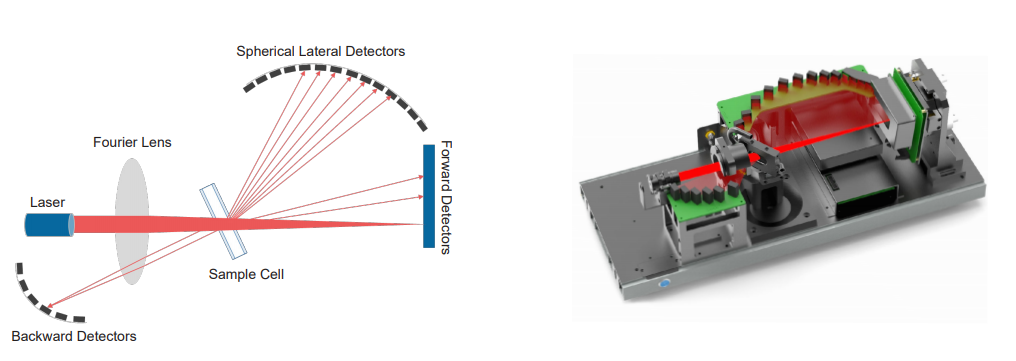
2. Software intuitivo y potente
- Interfaz de usuario intuitiva y funcionamiento ordenado
- Curva PSD en tiempo real para determinar las condiciones óptimas de medición
- Rutina de medición totalmente automática
- Rutina de limpieza automática
- Copia de seguridad automática de los datos e informes altamente personalizables
- Conversión directa según los modelos de evaluación Fraunhofer y Mie
- Cambio entre módulos de dispersión en húmedo y en seco con un solo clic
3. Dispersión húmeda
BT-802 está diseñado para la medición del tamaño de partículas con agua como medio.
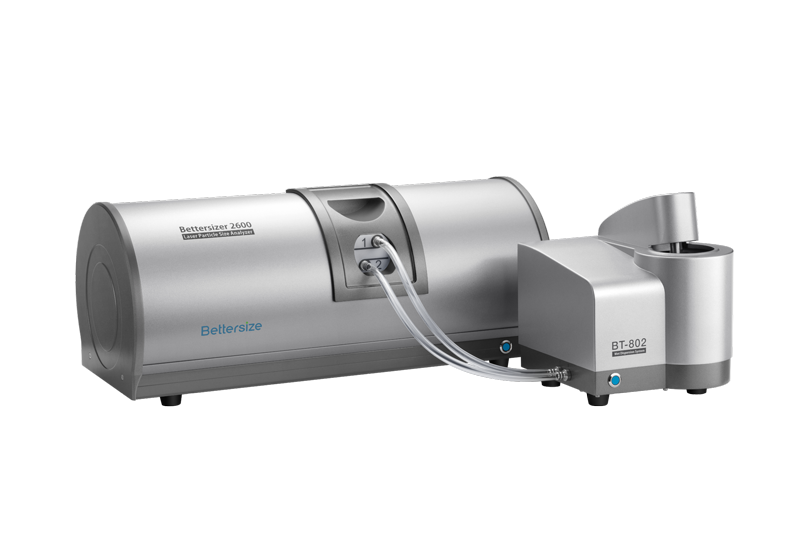
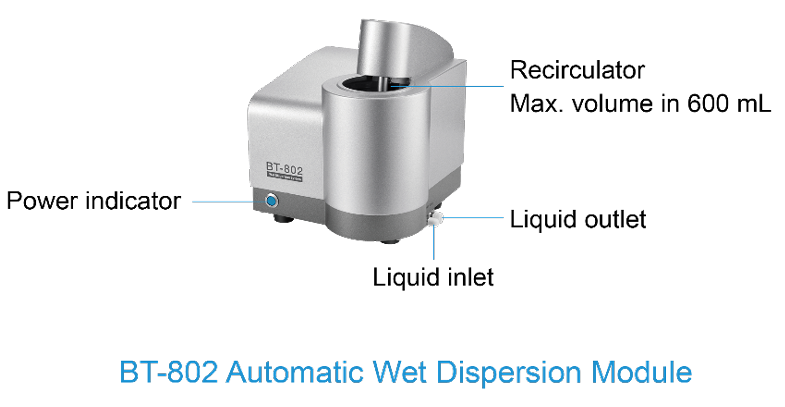
| Etanol | Metanol | Isopropanol | Éter |
| Tolueno | Xileno | Diclorometano | Octano |
| Acetato de etilo | Acetona | Oleato de metilo | Disolventes NMP |
ElBT-80N está formado por una carcasa de acero inoxidable. Entre sus componentes se incluyen una bomba centrífuga, un dispersor ultrasónico, una tubería de PTFE, una celda de muestra de cuarzo sinterizado, un circuito de control, etc.
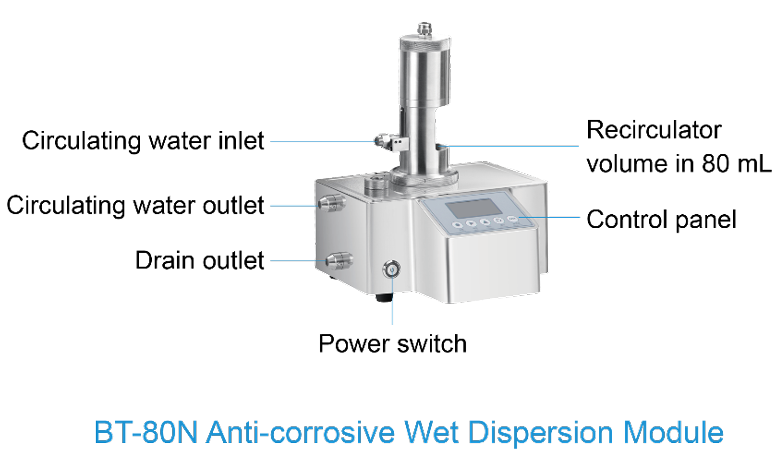


BT-804 está diseñado para mediciones de muestras valiosas o de pequeño volumen, en las que el medio es disolvente o agua. El módulo consta de una carcasa de ABS, un motor de agitación, una cubeta (8 ml), un agitador, etc.
- Volumen máximo en 8 mL con masa de muestras en 0,005 - 0,1 g.
- Adecuado para muestras dispersas en agua o fase orgánica.
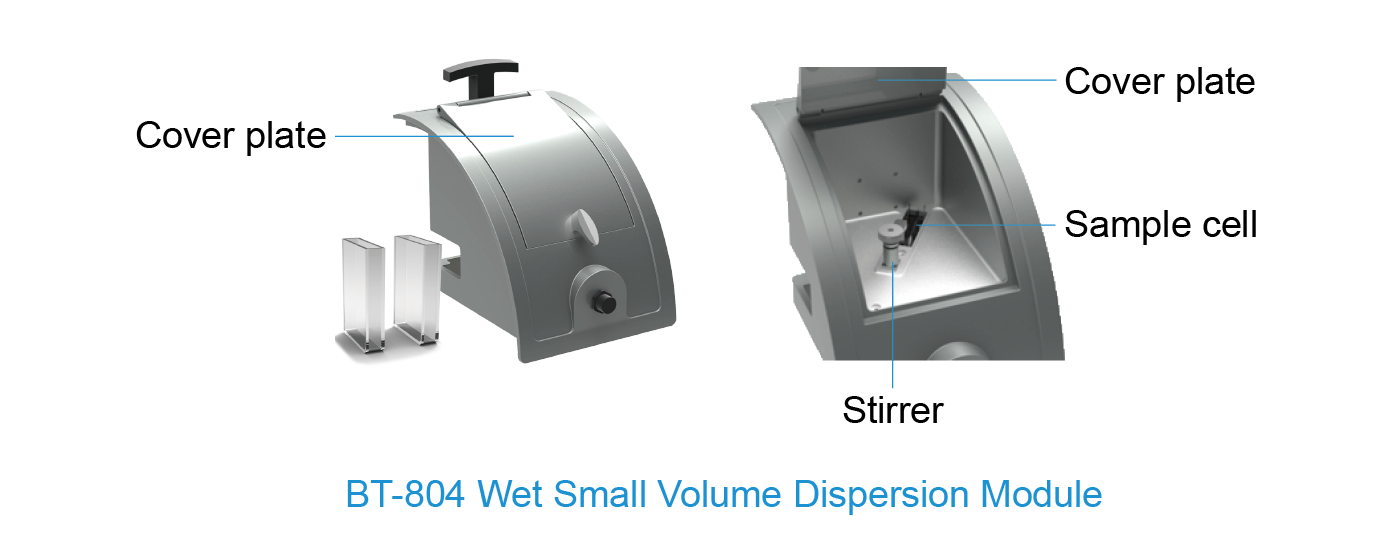
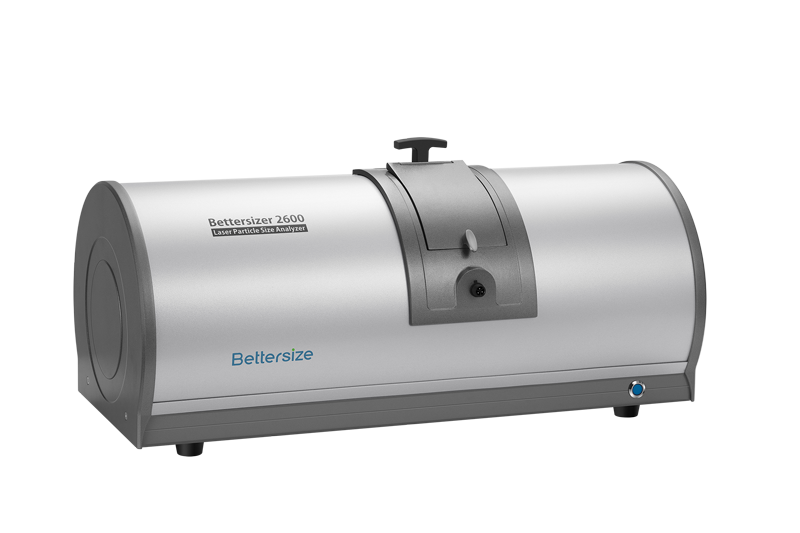
4. Dispersión en seco
El BT-902 es adecuado para mediciones de polvo seco. El gas utilizado puede ser aire comprimido, nitrógeno u otros gases nobles.
BT-902 se compone de un alimentador electromagnético por vibración, un tubo venturi, un circuito de gas, un circuito eléctrico, un sensor de presión, etc.
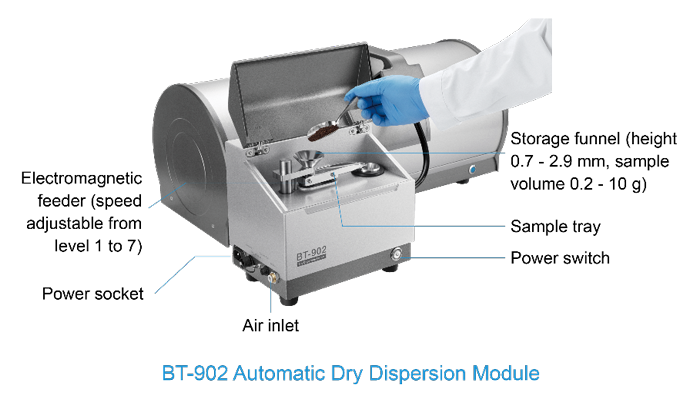

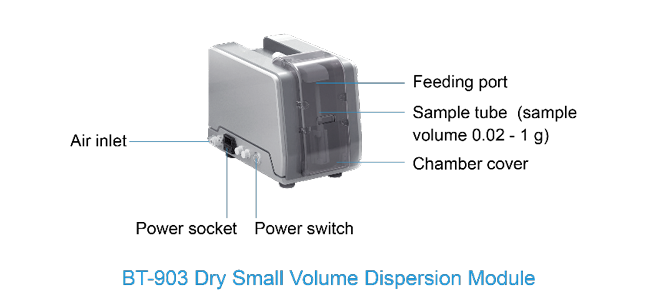
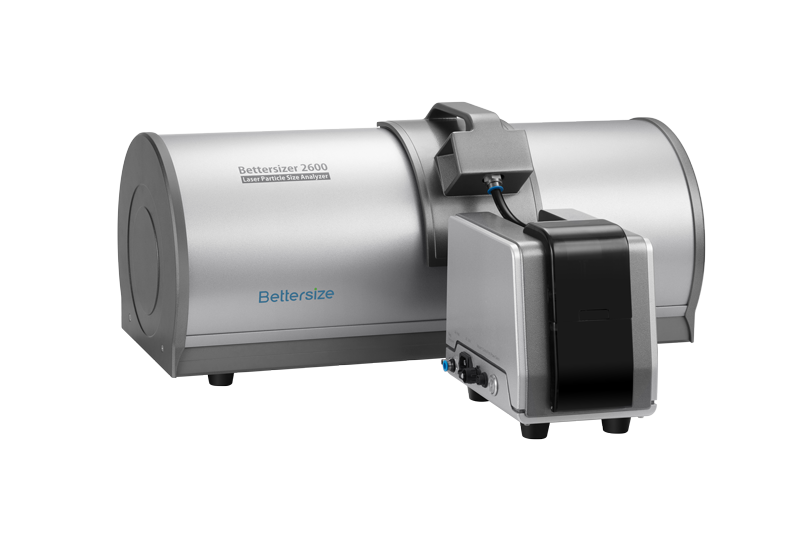
5. Aplicaciones

Citations
- Bettersizer 2600
Functional redundancy as an indicator for evaluating functional diversity of macrobenthos under the mussel raft farm near Gouqi Island
DOI: 10.1016/j.aquaculture.2023.740024 Read ArticleZhejiang Ocean University | 2024Biological traits analysis (BTA) helps to evaluate the effects of different environmental variables on the traits-based functional composition of macrobenthos. However, research on functional traits of macrobenthos under mussel farming is limited. We investigated the spatial and temporal response of the benthic system in terms of taxonomic and functional diversity to environmental variables of farming and natural stressors resulting from suspended mussel farming near Gouqi Island of eastern China Sea. The functional traits of macrobenthic assemblages under mussel farming were characterized by “medium adult body size”, “vermiform body form”, “high flexibility”, “infauna”, “semi-motile”, “gonochoristic”, “surface deposit-feeders”, “carnivores”, “semi-motile burrowers”, and “tube-dwellers”. Functional redundancy was stable in response to mussel farming stresses among seasons, whereas species diversity showed efficient to evaluate natural variables. Functional diversity was significantly affected by farming stressors rather than natural variables, Further analysis using multivariate methods together with continuous monitoring were highlighted to evaluate the impacts of mussel farming. Our results reinforce the importance of macrobenthic species and functional traits analysis to evaluate human stresses driven impacts in offshore ecosystems. By analysing the environmental variables with different sources, independently, we concluded the main effects of human pressures on macrobenthic community. Such distinction could be particularly effective to isolate variable environmental descriptors and evaluate their effects on functional diversity, making the current approach promising for the evaluation of ecological effects of anthropogenic stressors in aquaculture areas. - Bettersizer 2600
Degradation characteristics and utilization strategies of a covalent bonded resin-based solid amine during capturing CO2 from flue gas
DOI: 10.1016/j.seppur.2023.125621 Read ArticleChina University of Petroleum | 2024In this study, various types of degradation as well as attrition which are possibly encountered in a circulating fluidized bed temperature swing adsorption (CFB-TSA) process, were conducted experimentally to evaluate the stability of a resin-based solid amine sorbent. Other characterizations methods, such as elemental analysis (EA), Fourier transform infrared spectroscopy (FTIR) etc. were applied to further reveal the degradation mechanisms. The results showed that thermal degradation occurs from 140–160 °C due to the decomposition of amine group. The CO2-induced degradation occurs from a higher temperature of 160–180 °C accompanied by the production of urea. Hydrothermal stability is good below 130 °C, but the ionic impurities in steam crystalized on particle surface can accelerate the degradation. Oxidative degradation is the most harmful, which starts at a lower temperature of 70–80 °C with the formation of aldehyde. The existence of H2O in atmosphere can alleviate the oxidative and CO2-induced degradations. The employed sorbent has a very low attrition index of 0.05, which is 1–2 orders lower than typical commercial fluidized bed catalysts. Based on the results of stability evaluation, some design suggestions for proper utilization of this sorbent or other similar resin-based sorbents have been provided in an industrial CFB-TSA process.
- Bettersizer 2600
De-branching of starch molecules enhanced the complexation with chitosan and its potential utilization for delivering hydrophobic compounds
DOI: 10.1016/j.foodhyd.2023.109498 Read ArticleShihezi University | 2024The current study aimed to prepare the complexes between debranched-waxy corn starch and chitosan polymers (DBS-CS), and then investigated their corresponding structural characteristics, rheological property and potent application in Pickering emulsion. The results indicated that the existence of chitosan significantly inhibited starch short-range molecular rearrangement for all DBS-CS samples, which was manipulated by both debranching treatment and chitosan content. Interestingly, this is the first study to reveal that the outstanding peak at 1.8 ppm in 1H NMR spectrum for sample DBS-CS was gradually shifted towards a lower-field region following an increased chitosan content. Moreover, the debranching treatment shifted the crystallinity pattern from A-type to B-type and the relative crystallinity of DBS-CS decreased gradually with the increased content of CS. All samples had a pseudoplastic fluid and shear-thinning behavior with an enhanced shear resistance following the complexation. The DBS-CS was applied in a Pickering emulsion for showing a greater emulsifying stability and a lower gel strength than native NS-CS prepared emulsion. Importantly, the encapsulation ability of curcumin in the DBS-CS emulsion was significantly improved, followed by an increase of 15.45% for its corresponding bioavailability compared to the control. Therefore, this study might highlight a potential carrier for delivering the bioactive substances in a green pattern. - Bettersizer 2600
Heat-induced aggregation behavior of wheat gluten after adding citrus pectin with different esterification degree
DOI: 10.1016/j.foodhyd.2023.109420 Read ArticleGansu Agricultural University | 2024Wheat gluten aggregation during heat treatment is beneficial to the final quality of gluten-based products. Exogenous pectin can affect gluten aggregation. However, the effect of pectin with different degrees of esterification on the heat-induced aggregation behavior of gluten and its possible mechanism are still unclear. Thus, the heat-induced aggregation behavior of gluten after adding pectin with different esterification degree was studied in this study. When the temperature was raised from 25 °C to 95 °C, pectin affected gluten aggregation and was related to the degree of esterification. Specifically, the results of rheological properties and particle size indicated that low-ester pectin improved the viscoelasticity of gluten and promoted gluten aggregation. Thermal properties revealed that enthalpy of gluten added with low-ester pectin (37%) increased from 92.96 J/g to 95.40 J/g during heating process. Structurally, the fluorescence intensity and surface hydrophobicity of gluten added with low-ester pectin (37%) were lower than those added with high-ester pectin (73%). In addition, low-ester pectin (37%) significantly increased the disulfide bond content (from 15.31 μmol/g to 18.06 μmol/g) and maintained β-sheet content of gluten compared with gluten alone at 95 °C, indicating that low-ester pectin was more likely to induce gluten aggregation. However, scanning electron microscope showed that the gluten added with low-ester pectin (46%) exhibited a denser network structure at 95 °C than that added with low-ester pectin (37%). These results will provide a theoretical base for the regulation of gluten aggregation and the quality of gluten-based products by pectin with different esterification degree.
- 1
- 2
- 3
- 4
- 5
- 6
- 84
Recursos seleccionados
Testimonios


Analizador granulométrico relacionado
-
Bettersizer S3 Plus
Particle Size and Shape Analyzer
Measurement range: 0.01 - 3,500μm (Laser System)
Measurement range: 2 - 3,500μm (Image System)
-
Bettersizer ST
One-stop Particle Size Analyzer
Dispersion type: Wet
Measurement range: 0.1 - 1,000µm
Repeatability: ≤1% variation
-
BT-Online1
Online Particle Size Analyzer
Dispersion type: Dry
Measurement range: 0.1 - 1,000μm
Accuracy: ≤1% (D50 of certified reference material)
-
BeScan Lab
Stability Analyzer
Particle size ranges from 10 nm to 1 mm
Volume fraction up to 95%
Compliance with ISO/TR 18811, 13097, 21357, 22107











